Journal #22: Gimme Shelter
by Miles Raymer
When I think about a roof, two words instantly come to mind: “gimme shelter.” It’s unclear whether this is a testament to the cultural staying power of The Rolling Stones, a vestige of the music that pervaded my childhood, or just a quirk of my connectome. Since I’m not much of a Stones fan, I had to look up the opening words to their famous song:
“Oh, a storm is threat’ning
My very life today
If I don’t get some shelter
Oh yeah, I’m gonna fade away”
The desperation in these words doesn’t reflect my situation in life, nor does today’s political landscape exactly mirror the tumultuous time when they were written, but the value of the song––as with all good pieces of art––is how it blends parochial concern with universal human need. Everyone needs shelter, and I’m lucky to live in a time and place with high quality standards for newly-built ones. Building a roof to last isn’t cheap or easy, but it provides a sense of comfort that, while technically illusory, frees up energy that would otherwise be expended worrying about how to avoid the elements.
Hanging the trusses requires as much measuring, precision, and repetition as any other part of the building process. Not only do the trusses have to be evenly spaced so we can cover them with plywood, but they also have to be perfectly level. If the trusses are leaning one way or the other, it can put undue pressure on one part of roof, causing structural imbalance and increasing susceptibility to damage during storms or earthquakes. Plus, there is an obvious aesthetic appeal to the uniform arrangement of these elegant pieces.
Once the trusses were set, it was time to begin setting down plywood. Sean, who is incredibly strong and dextrous with awkward materials, was the obvious choice to brave the rafters. Dan and I marked and cut the plywood, and lifted the sheets up to Sean, who nailed them in place. It took a couple days, but we ended up with a great final product:
Once the plywood was up, we trimmed the front and back edges of the garage roof. It’s remarkable how trim sets off a construction project and hastens a feeling of completion. I was especially struck by how much depth and visual appeal is added by the narrow shadow board; it’s top edge is nailed flush to the trim’s.
For my part, I am most useful to Dan and Sean when doing mundane, repetitive jobs that require minimal explanation and have little potential for compromising the building’s structural integrity. I wouldn’t want to do such work all day long, but I also enjoy the routine nature of simple building tasks. This week, I spent a few hours blocking between the trusses and securing hurricane clips.
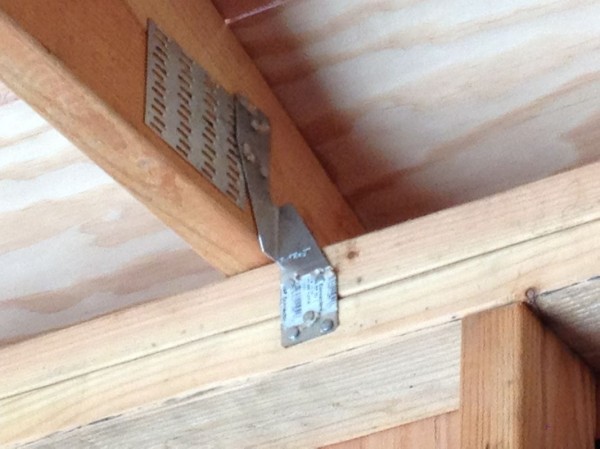
Hurricane clips secure the trusses to the top plates of the wall frame, similar to how anchor bolts secure the frame to the foundation
Both of these jobs were facilitated by a marvel of modernity: the nail gun. While certainly not the most advanced piece of modern building equipment, nail guns are perhaps the single most important tool for turning lengthy, back-breaking tasks into relatively quick and painless ones. Compared to a hammer, it’s a massive upgrade.
I like using nail guns. Wielding them safely requires that I respect the tool’s inherent dangerousness without worrying needlessly. They can be cumbersome and difficult, but not enough to make me wish I for the days of hammer-only building. Still, I feel a weird nostalgia for the good ol’ hammer––one that is probably not shared by anyone who has ever erected a whole house using one.
There is a notable difference in my reaction to the sound of a hammer versus that of a nail gun. In the hands of a capable user, a hammer’s sound is crisp and unambiguous. There is nothing mysterious about a hammer banging against metal or wood. This clear impact, when it reaches the ear, heralds the coming of at least one or two like sounds close to follow. Such reliable repetition, combined with the implicit knowledge that something useful is getting done, renders it comforting indeed.
The aural footprint of the nail gun is something entirely different. It is complex, mechanized, singular. It is a messenger of modernity, predicated on speed and proficiency and risk. It is the sound of fewer hands doing more work. And it relies on a cumbersome hose tethering it to that abrupt conversation killer, the air compressor.
Yes, I am thankful for the nail gun. But when I hold one, I can’t help thinking about the hammer, now more useful for pulling nails than slamming them home. The hammer lingers in the present but is also lost in time somehow, couched in the space between animal and technician where humanity’s adolescence blossomed. Though no longer the crown jewel of a builder’s toolbox, it is still an indispensable instrument of shelter.
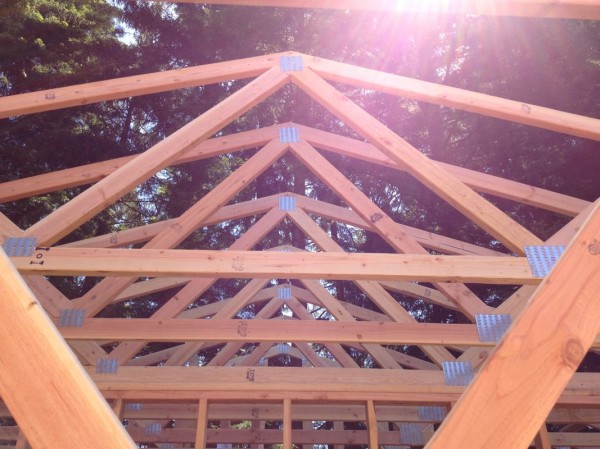
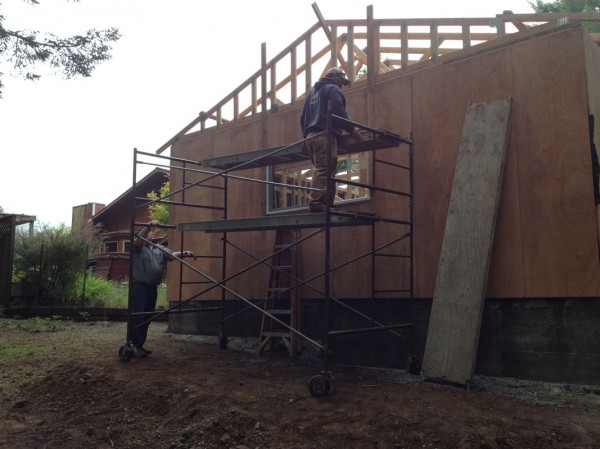
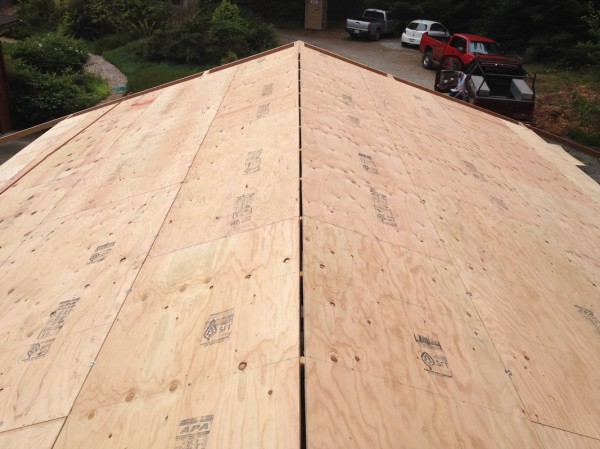
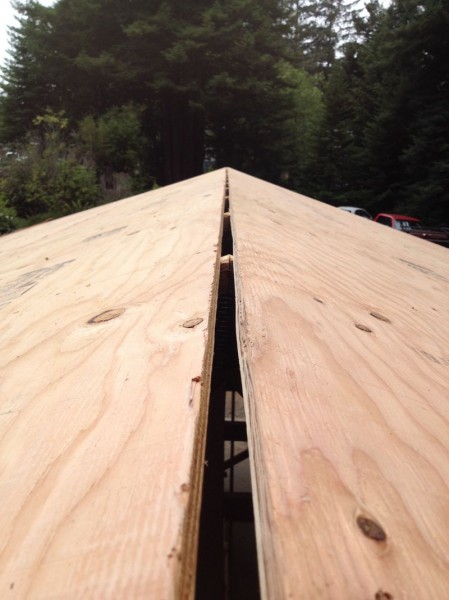
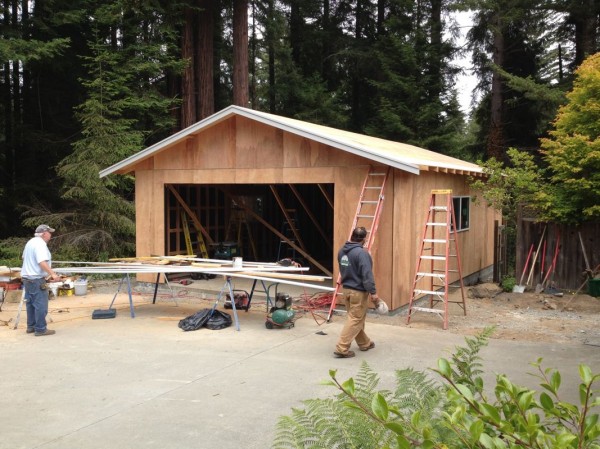
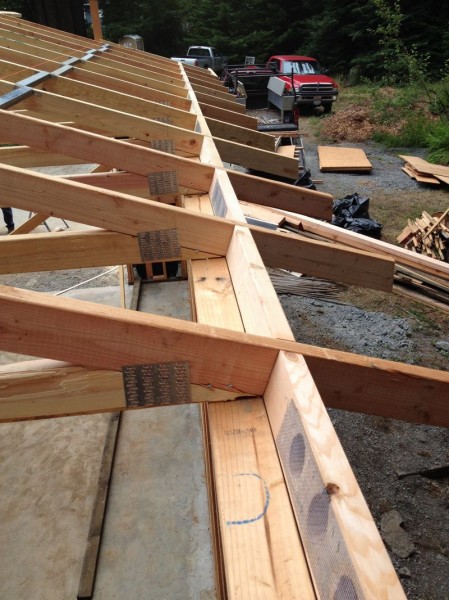
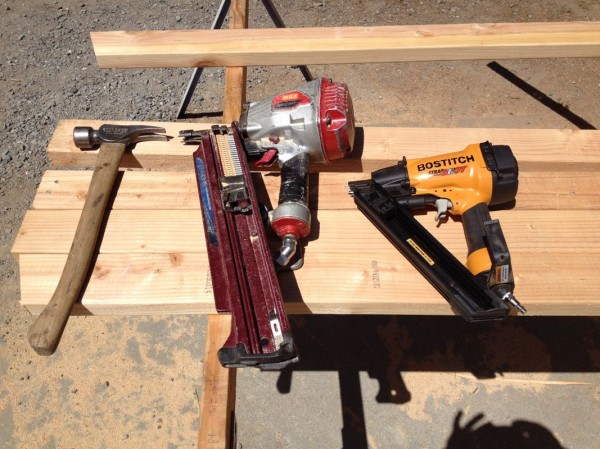
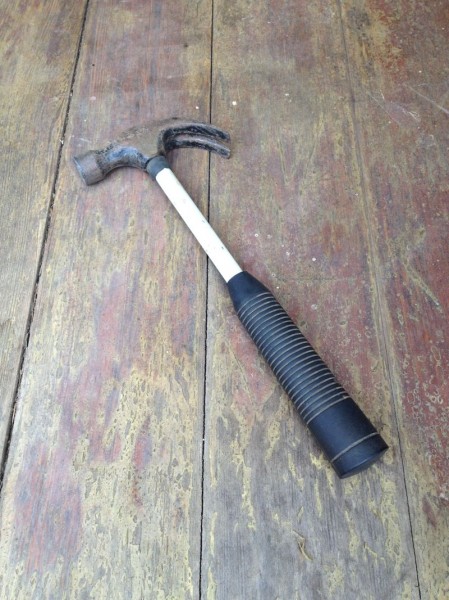
It’s looking great! Absolutely gorgeous, and all those nails carefully driven home.